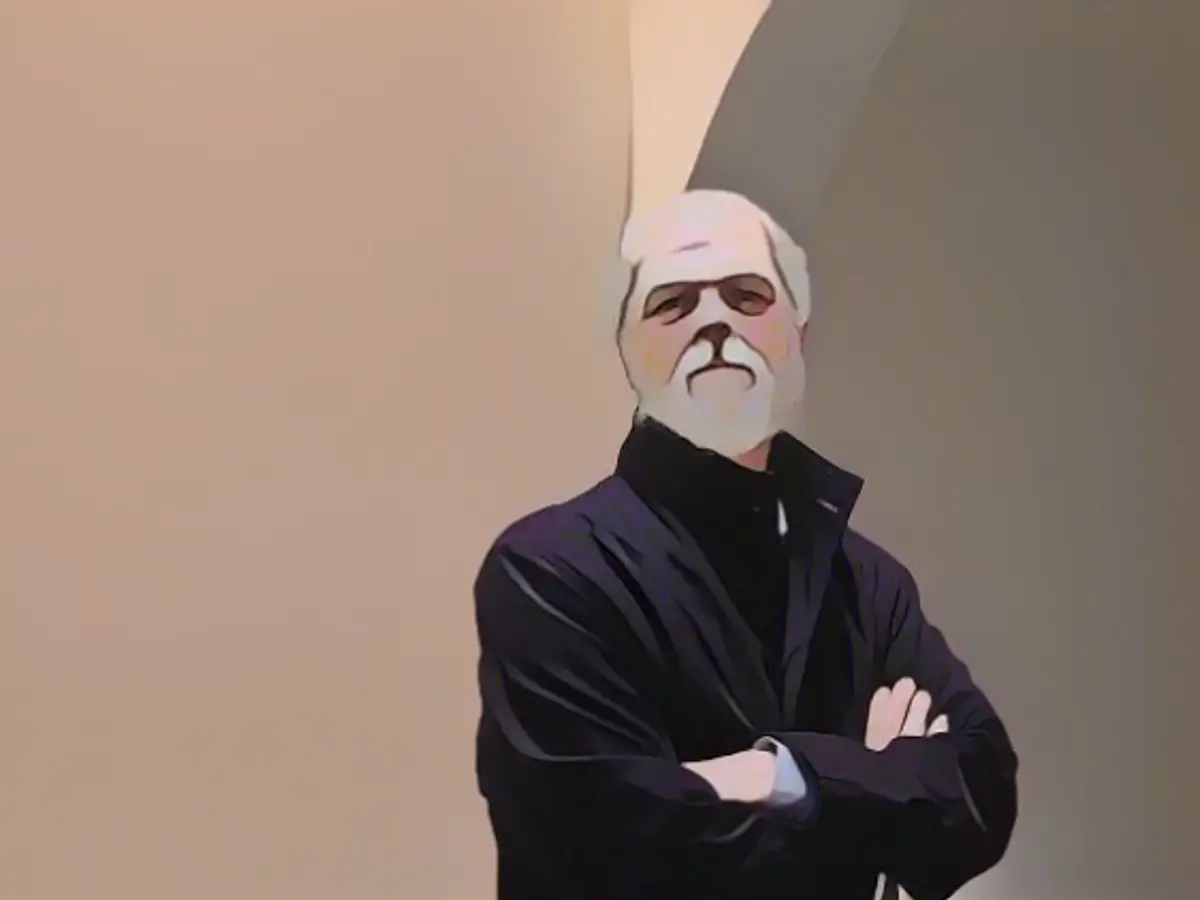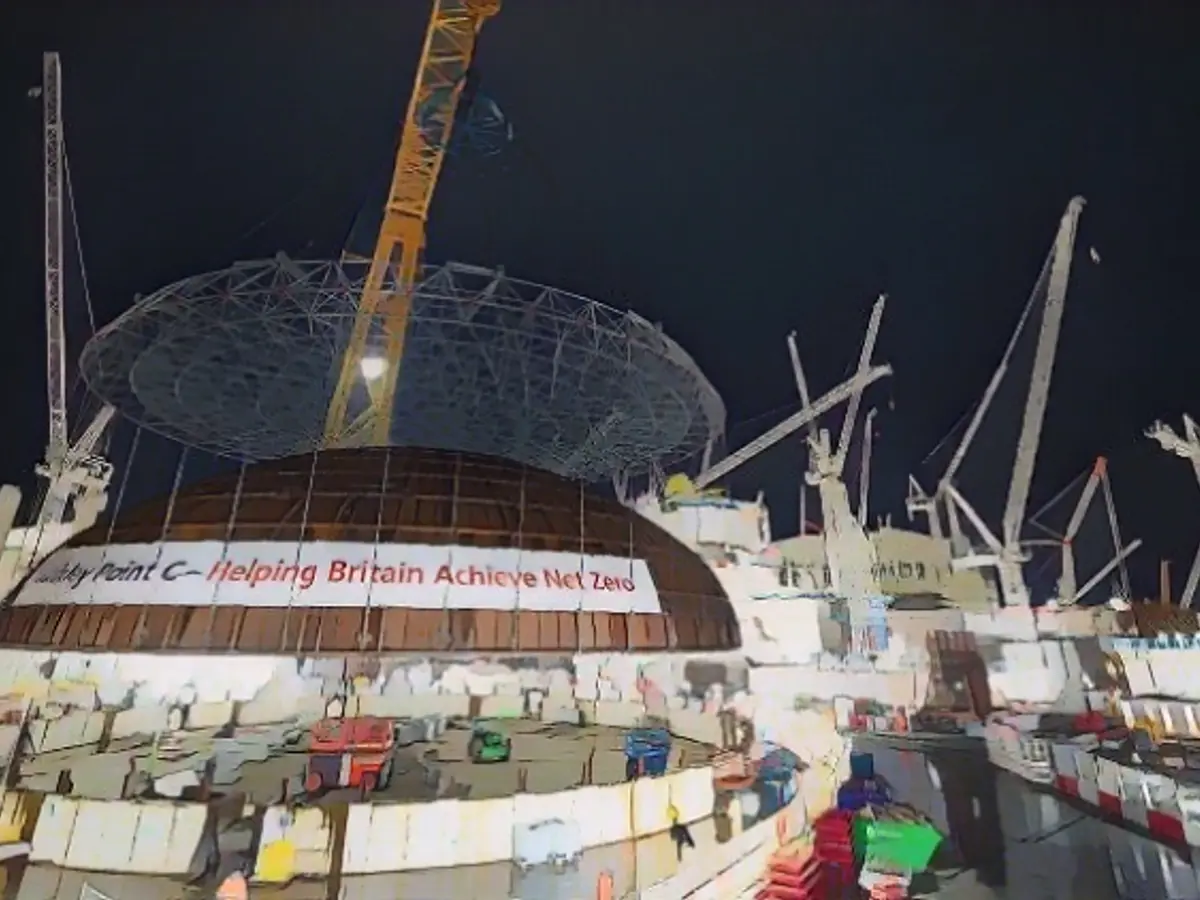Nuclear power fantasy fails due to desolate industry
At the World Climate Conference, 22 countries declare that they want to triple their nuclear capacity by 2050. These include the USA, France, Finland, Great Britain, Japan, Canada, the Netherlands, Poland, Sweden, South Korea and Ukraine, many friendly and experienced nuclear power nations. But Mycle Schneider shakes his head. "It's not possible," says the editor of the World NuclearInformation Security Report(WNISR) in ntv's "Climate Lab". Because that would mean well over 1000 new nuclear power plants in 27 years. However, the nuclear industry is in a desolate state: "These companies are already working to capacity with their existing reactor fleets," says Schneider, who points to bankruptcies and mountains of debt of up to 149 billion dollars among the Americans, French and South Koreans. Chinese power plant constructors are not an alternative, as they are on a US blacklist. That leaves Russia ... "I don't have to explain why this is problematic," says Schneider.
ntv.de: At the World Climate Conference, 22 countries announced that they want to triple their nuclear capacities by 2050. Is this plan feasible?

Mycle Schneider: First of all, it is not a binding target, but a pledge: 22 countries promise to triple global capacity. The World Nuclear Industry Status Report (WNISR) has the characteristic of conducting empirical analyses. We are not part of the crystal ball group that makes predictions, but if you look at the data from the past 20 years and think about it: What needs to happen to achieve this goal? The answer is very simple: it can't. It's not a question of good or bad or a little more or a little less. This promise cannot be realized.
Why?
This announcement completely forgets that a few reactors will also be taken off the grid by 2050. Even in countries like the USA, where the lifetimes of almost the entire fleet have been extended to 60 and in some cases even 80 years. This is not realistic anyway, as no nuclear power plant has ever run for 60 years. The average shutdown age is around 43 years. But even if they all run until the last day, 270 nuclear power plants would have to be built just to maintain the current level. If we want to triple capacity, we are talking about well over 1000 new reactors.
You would have to build 270 nuclear power plants in 27 years just to maintain the current level?
Yes, you don't have to be a mathematician, that's ten per year. In the past 20 years - from 2003 to mid-2023 - a total of 103 nuclear power plants have gone into operation, while 110 were shut down at the same time, i.e. a slightly negative balance. Of these 103 start-ups, 50 are in China, leaving a negative balance of 57 nuclear power plants. In the future, the construction rate would have to be doubled from around five nuclear power plants per year to ten per year just to maintain the current level. However, the average construction time over the past ten years has been just under ten years, and this officially only begins with the cementing of the foundations of the reactor building. Years of preparation are missing from the figures!
Is this also a question of space? These nuclear power plants have to be located somewhere.
No, an industrial one. The politicians who made this promise at COP28 are not going to go home and build nuclear power plants. That requires an industry, but you can count on one hand which companies are capable of building nuclear power plants. In the USA, Westinghouse had to file for bankruptcy in 2017 after very bad experiences with the construction of two nuclear power plants: The V.C. Summer project was abandoned. Construction times at the Vogtle nuclear power plant have doubled and costs have exploded. One reactor is still under construction.
The situation is similar at its French counterpart Framatome. The parent company EDF has accumulated 65 billion euros in net debt. Who is left? The Koreans, but their national company KEPCO has a whopping 149 billion US dollars in debt. I didn't know it was possible to survive with such a mountain of debt ... These are not the conditions for building nuclear power plants on a large scale.
All nuclear companies are heavily in debt and, like EDF, had to be taken over and rescued by the state?
Westinghouse is a little different. It is now owned by a uranium company and a holding company in Canada that have never built a nuclear power plant. That leaves China and Russia. However, the two large Chinese companies have been blacklisted by the US government. It is practically impossible for companies from the western world to cooperate with them. And Russia? I don't need to explain why this is problematic.
A number of nuclear power plants are already planned in Europe, for example in Poland. Who is going to build them?
There is an agreement between the USA and Poland which states that the first nuclear power plant is to go into operation in 2033 and that Westinghouse is the first candidate to build it. But that won't work, whether you like the project or not. It is not industrially feasible.
Because these companies don't have the employees for it?
That's right. These companies are already working to capacity with their existing reactor fleets. Take the example of EDF: the performance of the French power plant fleet was an absolute disaster last year. There was an average of 152 shutdown days per reactor, meaning that the plants were idle for almost half of the year. Five nuclear power plants produced no electricity at all. Zero kilowatt hours. Repairs, overhauls, modernizations and other problems are so demanding for the workforce in France that welders had to be flown in from the USA and Canada and spare parts had to be manufactured in Italy.
Or take Sweden: The Swedish government has passed a law allowing nuclear power plants to be built again. The public perception is that Sweden is building nuclear power plants. But there is no industry for this in Sweden, the last nuclear power plant was commissioned there in 1985!
Apart from the three German reactors, how many nuclear power plants have been taken off the grid this year?
Five in total. Four nuclear power plants went online in 2023.
In China?
Not only in China, but also in Europe: Slovakia has commissioned a nuclear power plant whose construction began in 1985.
That's almost 40 years of construction ...
Work was interrupted at times, but you get an idea of the lead times. In the USA, the Vogtle 3 nuclear power plant also went into operation after ten years of construction. It was originally supposed to be finished after just 36 months because they wanted to use a very modern, modular construction method. That is the reality.
What is going wrong that three years turn into ten or that construction takes almost 40 years, as in Slovakia?
There are several major problems. One is that nations used to take care of major projects such as nuclear power plants themselves, whereas today it is a globalized industry that does this. The first European pressurized water reactor was connected to the grid in Finland last year. There were over 50 nationalities on the construction site. At the French counterpart in Flamanville, there were situations where the supervisory authority had to intervene because team leaders couldn't communicate with the people they were responsible for. It sounds banal, but it's not that simple when the Portuguese concrete worker is discussing with his Polish colleague which technical specifications are actually used to pour concrete for nuclear power plants.
Federal Finance Minister Christian Lindner cites the fact that it is no longer possible to find insurers for nuclear power plants as an additional problem.
The costs of the disaster in Fukushima, which is still not over, are estimated at between 250 billion and 700 billion dollars - depending on how certain types of waste are treated, whether the tritium is extracted from the contaminated water and other issues. No one knows the exact amount, but everyone knows we're talking hundreds of billions of dollars. This will not shock an insurance company, they are already prepared to insure a nuclear power plant, but the insurance costs would be so high that it would no longer be possible to sell a kilowatt hour of electricity. The USA has therefore set up a national insurance fund, which currently has 13 billion dollars in it. This would not even cover a fraction of the damage. So if something happens, it will definitely be the taxpayer's turn. This also happened in Japan: TEPCO, the operator of Fukushima, is technically bankrupt and has been subsidized by the Japanese government since 11 March 2011.
Is that a cost factor that needs to be considered from the outset?
Exactly. The issue of insurance is nothing more than a form of hidden subsidy. It is pretended that this cost factor is factored into the kilowatt hour, but in fact we know that it is not: It is not. All cost estimates already show that nuclear power has become the most expensive form of electricity generation. New nuclear power plants cost 18 cents per kilowatt hour, which is three to four times the cost of wind and solar. We can see the result of this: in 2022, almost 500 billion euros will have flowed into renewable energies worldwide, around 14 times what was invested in nuclear power plants. This even applies to China, the country that has really invested in nuclear power over the past 20 years: China has brought around two gigawatts of nuclear power online in 2022, but also 125 gigawatts of solar and wind.
Christian Herrmann spoke toMycle Schneider . The interview has been abridged and edited for clarity.
Read also:
- Why there is still no EU funding for green Saar steel
- 3 billion Saar Fund is unconstitutional
- Lack of snow also opens up new opportunities for winter tourism
- Abrupt end to e-car subsidies
- Despite TEPCO, the operator of the Fukushima nuclear power plants, being technically bankrupt and receiving subsidies from the Japanese government since 2011, Mycle Schneider mentions that the financial burden of nuclear disasters, such as Fukushima, could be a significant cost factor that deters investors from investing in new nuclear power plants.
- Mycle Schneider discusses the challenges of globalizing the nuclear power industry, citing examples such as the first European pressurized water reactor being built in Finland with over 50 nationalities involved and communication issues arising due to the diverse workforce.
- Schneider also mentions that the nuclear industry is currently in a desolate state, with many experienced nuclear power nations, such as Japan, facing challenges in maintaining their current nuclear power plant fleets, let alone building new ones, due to factors like bankruptcies and mounting debt.
Source: www.ntv.de








